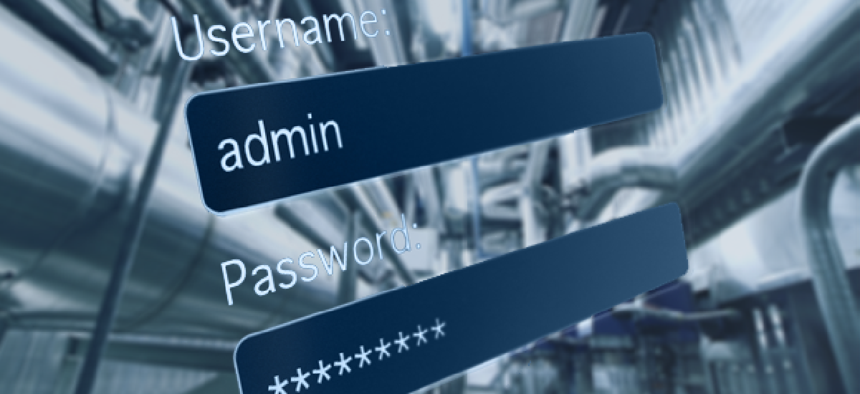Look for more attacks coming from privileged accounts


Connecting state and local government leaders
A recent survey claims that most, if not all, of the rise in sophisticated, targeted attacks from the outside is due to exploitation of privileged accounts.
Abuse of privileged accounts has been understood for a long time to be a major security concern, since it opens up broad access to an organization’s data and IT resources. Up to now, however, the focus has mainly been on how this applies to the so-called insider threat.
Perhaps that has to change. A new report from security solutions vendor CyberArk, which surveyed many of the world’s top security forensics experts, makes the worrisome claim that most, if not all, of the more sophisticated, targeted attacks from the outside are due to exploitation of privileged accounts. And it’s something that many agencies are unaware of.
What’s more, attackers have become adept at using an organization’s business and trading partners to gain access to systems. Even if the organization itself has built its security to make direct attacks on its privileged accounts hard, small and medium-sized partners will probably not have the same experience and expertise. However, they may well have been given privileged access to the organization’s systems just because it’s the easier way to do business.
The oft-cited Target breach, for example, which resulted in the theft of millions of customers’ credit card account data, was due to attackers first getting Target network credentials through its air conditioning vendor.
In August this year, Department of Homeland Security contractor USIS, which does background checks on the agency’s employees, revealed a breach that had “all the markings of a state-sponsored attack” and bled details on up to 25,000 DHS workers.
Even more startling is the report’s assertion that, on average, organizations have as many as three to four times the number of privileged accounts as they do employees. That makes for a very broad field from which attackers can gain access to those accounts.
This is often overlooked in organizations, according to Udi Mokady, CyberArk’s chief executive, since privileged accounts are rightly seen as the key to the IT kingdom and therefore are naturally assumed to be limited.
“In fact, there are many of them,” he said. “They are built into every piece of information technology so, at a minimum, there is one for every desktop system in the organization. But they are also built into every server and every application, operating system, network device, database and so on.”
Those all come with built-in accounts for a system administrator to monitor and control them. But in the modern environment of virtualized IT, every time a new system is spun off, yet another operating system and set of applications is created, along with the virtualization layer with its administrative functions. So the number of privileged accounts tends “to grow exponentially,” Mokady said.
If all of this isn’t enough to give security professionals nightmares, the report also points out that the Internet of Things (IoT) is coming – and quickly. That speaks to allthe embedded systems organizations will have to account for outside of the regular IT infrastructure, “the pieces of technology with a brain,” as Mokady put it.
Critical infrastructure organizations are just one example of what this will entail, with energy companies having privileged accounts also to manage, for example, industrial control systems that take care of power plants and electricity grids.
“These are computers, though not the typical idea of a computer, but they are often targeted by attackers even more than the regular pieces of the IT infrastructure,” Mokady said.
They are also probably more vulnerable than regular IT systems. The report points out that embedded devices require regular firmware updates and typically have more complex quality assurance cycles, which may in turn cause them to lag behind other products as far as security is concerned.
The basic problem for an organization’s security defense is that when attackers gain access to privileged accounts they can penetrate systems undetected, without throwing up alarms and red flags. Intrusion detection tools now are useless. Agencies have to assume that breaches have occurred, that attackers are already inside their networks, and hunt for them.
Managing this situation will mean both a turnaround in traditional thinking about security, though the idea of first stopping attacks at the network perimeter is fast losing ground to the idea that the focus has to be on the inside, which will help. Still, to guard against the privileged account threat, organizations have to spread their arms wide enough to actively monitor and manage those accounts.
No question, that’s a major headache. But some of the current tools can be reworked to help, Mokady said, such as using firewalls to segment user access within an organization, and using encryption to more closely guard data. There are also automated tools now on the market, like those from CyberArk itself, that can detect and count the number of privileged accounts within an organization, and also to automate and change credentials and encrypt and segregate them in secure vaults.
The report lays out generic guidelines that organizations can follow that, just by tightening the regular security practices they follow, will greatly improve their ability to defend against attacks:
- Inventory privileged accounts.
- Make it harder to get privileged access.
- Proactively monitor privileged accounts.
- Perform regular, recurrent housekeeping.
- Monitor and limit the privilege of service accounts.
- Apply patches as quickly as possible.
- Practice classic defense in depth.
NEXT STORY: 8 ways to reduce unauthorized software




